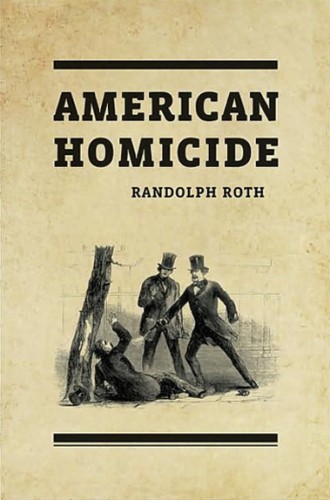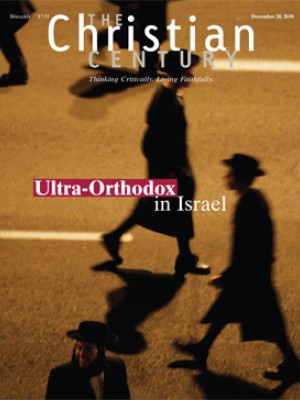Murderous nation
In 1863 a cooper in Chillicothe, Ohio, named Schyler Courier angrily responded to a group of boys throwing snowballs at him by firing his shotgun, killing one of the boys. In 1866 in Petersburg, New York, Hiram Coon warned his employer's wife, Mary Laker, to quit taunting him for his criminal past; when she would not stop, he split her head open with an ax. In 1873 an enraged Walden, Vermont, farmer named James Snow shot peddler John Stanton in the face for the latter's snarky comment to Snow's wife—"I guess you have money, as farmers generally have plenty of it"—when she said she did not have money to buy Stanton's goods. In 1876 farmer Sylvester Cone in Tamworth, New Hampshire, discovered two boys skinny-dipping in his pond; they "thumbed their noses at him" when he ordered them to get out, so he "returned with a gun and shot one of them dead." In 1877, at a still in Gilmer County, Georgia, Wofford Brown reminded Anthony Goble that the Goble family had a history of theft; in response, Goble took "a big two pound rock and splashed his d—d brains out, and then jumped on him, and stamped him into jelly."
These are but a few of the murderous stories contained in Randolph Roth's fascinating and often horrifying book. Roth makes use of newspaper articles, diaries, letters, local histories, coroners' reports, vital records, government documents, court records and court case files to provide a remarkably detailed look at the history of murder in the U.S. from the founding of the colonies to the present. Defining homicide as "all deaths resulting from willful assaults . . . except those occurring in open warfare," Roth opens a window onto the panoply of four centuries of murder in America, from political homicide to romance murders to spousal killings to homicidal property disputes to serial murder.
Read our latest issue or browse back issues.
To think historically is to recognize that everything has a history and that everything changes over time. Many intriguing pieces of information in American Homicide suggest how murder has changed over the past four centuries. When we examine homicide in 19th-century America, for example, we see that African Americans killed at a much lower rate than whites, and Chinese women were the most likely of all women to be murdered.
Even more intriguing is Roth's well-documented observation that "America was one of the least homicidal societies in the Western world in the mid-eighteenth century and again in the early nineteenth." It had pockets of greater violence, particularly in the South (the creation of a slave society brought with it an elevated level of violence) and on the various frontiers, but as civilization arrived, the murder rate dropped quickly and dramatically.
America's status as one of the least homicidal places on earth did not last. In the middle of the 19th century the murder rate started going up, and by the end of the century the modern pattern was set. From 1918 to the present America's homicide rate has fluctuated between six and nine murders per 100,000 adults per year.
The contrast betwen the U.S. and the rest of the world's affluent democracies is startling. Nearby Canada has had only one-quarter of America's per capita killings since World War II; next in line is Australia, then Italy, then ten more nations, and then England, the Netherlands and Ireland, which have had approximately one-tenth America's murder rate in the past 65 years. Even if one believes, as the media apparently do, that the only murders worth noting are those of Americans of European descent—who are actually "the least likely victims of homicide"—the U.S. remains "two and a half to eight times more homicidal than any other affluent democracy."
Roth is not simply seeking to describe. He also wants to explain. In the book's introduction he makes a convincing case that while standard (and wildly different) liberal and conservative explanations of America's homicidal nature—endemic poverty, weak policing, alcohol and drug abuse, easy access to guns, a persistent frontier mentality, a highly patriarchal culture, an obsession with honor, the failure of "civilization" to take hold in America, the legacy of slavery—tell us something about the patterns of murder, they fail to do what historians must do: explain change over time. How did it come about that, America's colonial and early Republic history notwithstanding, "two-thirds of the world's people [now] live in nations that are less homicidal than the United States"?
Roth believes he has the answer, both for the large change since the early 19th century and for the smaller fluctuations. He argues that there is a strong correlation between homicide rates and whether people feel solidarity with their fellow citizens, regard the social hierarchy as legitimate and think the government is stable, fair and trustworthy. Put succinctly, the more positive that people feel about government and society, the fewer the homicides.
In making this argument Roth is building on the work of criminologist Gary LeFree, who has correlated polling data with American homicide rates in the latter half of the 20th century. Of course, Roth does not have polling data for all four centuries of American history. Instead, he offers sweeping statements about how Americans as a whole and in particular regions felt about government and their fellow citizens in this or that period. He adds to these general observations a surprising empirical argument: "The best predictor of increases and decreases in America's homicide rate has been the percentage of new counties named for national heroes—an indirect measure of how Americans felt about their nation and one another."
The number of counties named for national heroes "dropped from a high of 46 percent in the 1810s and 1820s, when the nation's homicide rate was low, to only 18 percent" in the late 19th and early 20th centuries, an alienation that reflects "one of the fundamental reasons America's homicide rate has been high for the past 160 years."
In the book's preface and introduction Roth is quite clear that he is presenting a "working hypothesis." While "strong patterns have emerged that show correlations between increases in homicide rates and changes in people's feelings about government and society . . . more data will have to be gathered to confirm these correlations." But in the rest of the book the reader can lose sight of the hypothetical nature of his argument. Interpretive conjectures are presented as established fact and often come across as unconvincing post facto explanations, as in the claim that the rise of homicides in the northern United States in the 1840s and 1850s stemmed from "anger about the government's failure to protect their interests, a decline in fellow feeling, and frustration over the declining opportunities for self-employment." Even if there were more data to tighten the correlation between, say, counties named for national heroes and the homicide rate, it is hard to imagine how these correlations would constitute "proof" of his argument, given that some statistical correlations are simply meaningless.
Roth has tackled a very difficult topic, and it is very much to his credit that he is not content with description but wades right in to the complexities of explanation. However, it is peculiar that he has almost nothing to say about the death penalty. The index has no entries for capital punishment, death penalty, executions or punishment; moreover, given his definition of homicide as "all deaths resulting from willful assaults . . . except those occurring in open warfare," one is left to wonder whether or not he defines execution as murder. More to the point, it is odd that he provides no sustained discussion of the fact that the U.S. is both the most homicidal affluent democracy and a country that executes more convicted murderers than almost any place on earth. It seems plausible that Americans' proclivity to kill convicted murderers might correlate with their more general proclivity to kill fellow citizens.
Speaking of correlations, there is another one that Roth did not consider: the U.S. is not only the most homicidal Western nation, it is also, by most empirical measures, the most religious Western nation. Three rather depressing questions come to mind. Is there any connection between the spread of Christianity—particularly in the South and West—in the Second Great Awakening and the rise of the murder rate beginning in the 1840s? More generally, does the religiosity of Americans contribute to the willingness of Americans to kill each other? And third, why does it seem that religious—particularly Christian—commitments seem to contribute very little to quelling violence in America?
Roth might respond by noting that our religiosity reflects only one part of our human nature. As he notes at the end of the book, human beings are "bipolar," having an "unparalleled capacity for "forgiveness, compromise, and reconciliation" as well as an unparalleled capacity for "cruelty, intransigence, and domination." Whether or not the murderous side of our nature prevails "depends on historical circumstances."
And what are our current historical circumstances? Roth hopefully notes that "most of the leading candidates in the American elections of 2008 recognized that divisive rhetoric is capable of inciting violence and deliberately stepped back from the worst excesses of partisanship." The FBI's statistics for the homicide rates in the first half of 2009 have indeed indicated a drop in the homicide rate, leading some social scientists to make reference to the "Obama effect." But with the rise of "birthers" and "tenthers" and militias, political rhetoric has heated partisanship to the boiling point. If Roth is right that there is a correlation between consensus about the legitimacy of government and the homicide rate, the West's most murderous nation is poised to become more so.







